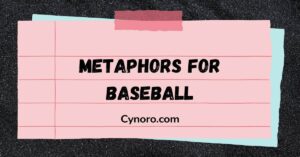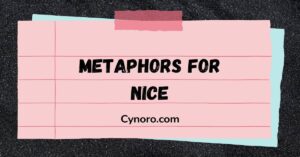In today’s digital age, communication has evolved in exciting and sometimes unexpected ways. One example of this transformation is the widespread use of abbreviations and slang terms. One of the most common of these abbreviations is WSP, an acronym that stands for “What’s up?” This simple greeting has become a staple in casual conversations, particularly among younger generations and on digital platforms.
In this blog post, we’ll take a deep dive into the WSP word meaning, its various uses, and provide you with plenty of examples. We’ll also explore how this acronym fits into modern communication, including its synonyms, antonyms, and the right contexts for using it.
What Does “WSP” Mean?
The term “WSP” is an abbreviation for the phrase “What’s up?”, a casual greeting or inquiry commonly used in conversations. It serves the same purpose as asking someone “How’s it going?” or “What are you up to?”. The difference lies in the fact that “WSP” is a more informal, quick, and text-friendly way to ask these questions. The simplicity and efficiency of WSP make it a favorite among those who rely on text messages or social media.
While WSP is widely recognized in text messaging and online communication, it also pops up in group chats, casual emails, and social media comments. It’s an easy, fast way to reach out to someone without the need for formalities.
The Origin of “WSP”
“WSP” has roots in the more traditional “What’s up?”, which can be traced back to African American Vernacular English (AAVE). Over the years, it gained traction through popular culture, particularly in hip-hop music, television shows, and commercials.
An iconic example of “What’s up?” cementing itself in popular culture occurred in the 1999 Budweiser commercial, where a group of friends enthusiastically greet each other by shouting, “Wassup?” This moment was so impactful that it turned the phrase into a cultural phenomenon, further establishing “What’s up?” and its abbreviations like WSP as a significant part of casual, friendly exchanges.
Using “WSP” in a Sentence
To understand how WSP works, let’s look at some practical examples:
- “Hey, WSP?”
- “Yo, WSP with the team?”
- “Long time no see! WSP?”
- “I’m chilling at home, WSP?”
As you can see, WSP serves as an informal way to ask someone how they are or what they’re doing. It’s typically used in relaxed, casual settings—like texting friends or commenting on social media.
Examples of WSP in Different Contexts:
- Texting Friends
- “WSP, you free tonight?”
- “WSP, let’s grab lunch later!”
- Social Media Comments
- “WSP everyone, how’s your day going?”
- “Just wanted to drop by and say WSP!”
In these examples, WSP effectively serves as a shorthand for a friendly, conversational greeting.
Synonyms for “WSP”
Like many other slang terms, WSP is often interchangeable with several other phrases. Here are some of the most popular synonyms for WSP:
- What’s up?
- How’s it going?
- What’s happening?
- What are you up to?
- Hey!
- Yo!
- How’s everything?
These synonyms can be used in a variety of informal contexts, from casual conversations to text messaging. Each one has a similar meaning but can convey slightly different tones depending on the relationship between the people involved. For example, “How’s it going?” may feel a bit more formal than “WSP”, but both can be used to initiate a conversation.
Antonyms of “WSP”
Since WSP is a greeting, its antonyms are typically phrases used to end a conversation or indicate closure. Here are a few examples:
- Goodbye
- See you later
- Talk to you soon
- Catch you later
- Take care
These antonyms are often used at the end of a conversation, signaling that the interaction is coming to a close. They serve as a friendly way to wrap things up, whereas WSP is used to kick things off in a more informal, laid-back manner.
Who Uses “WSP”?
The term WSP is primarily used by younger generations, including teenagers and young adults. It has become a go-to greeting in informal conversations, particularly among peers. Social platforms like Instagram, Snapchat, WhatsApp, and Facebook are places where WSP thrives, especially in text conversations and comments.
In particular, Gen Z (those born between 1997 and 2012) frequently uses WSP and similar digital slang. Their affinity for texting and online communication, paired with a desire for speed and efficiency, makes abbreviations like WSP ideal for everyday exchanges.
It’s also important to note that WSP has become a cultural phenomenon, with many users embracing the term as part of their digital vernacular. This has been encouraged by social media influencers, celebrities, and pop culture, all of which influence language and communication trends.
When to Use “WSP”?
While WSP is a convenient and friendly greeting, it’s essential to know when and where it’s appropriate to use it. Below are some considerations for determining when WSP is the right choice:
- Informal Settings: Use WSP when talking to friends, peers, or family members in a relaxed, casual atmosphere.
- Digital Conversations: It’s most effective in digital communication, such as text messages, social media posts, or direct messages on platforms like WhatsApp and Instagram.
- Younger Audiences: If you’re interacting with someone from a younger generation, especially Gen Z, WSP is more likely to be understood and appreciated.
- Casual or Friendly Contexts: Avoid using WSP in formal contexts such as business emails or professional discussions.
When Not to Use “WSP”
- Professional Settings: In emails to colleagues, clients, or superiors, it’s better to use more formal greetings like “Hello” or “Good morning.”
- Formal Situations: If you’re in a setting that requires a level of seriousness or respect (e.g., job interviews, meetings), WSP may not be suitable.
- Strangers or Acquaintances: If you’re meeting someone for the first time or don’t have a close relationship, it might be better to use a more conventional greeting.
The Versatility of “WSP”
One of the things that makes WSP so appealing is its versatility. Depending on the tone, context, and relationship between speakers, WSP can be tailored to fit various social situations:
- Short and Friendly: When you’re just casually checking in with someone, WSP is short, sweet, and effective.
- Casual Icebreaker: Use it to start a conversation, especially if you’re reconnecting with someone you haven’t spoken to in a while.
- Group Chats: Whether you’re messaging a group of friends or family, WSP can serve as an easy way to engage everyone.
Its adaptability and ease of use make it a go-to phrase for many casual conversations, particularly in fast-paced, online interactions.
Fun Facts About “WSP”
- Cultural Influence: The term WSP is more than just slang; it’s become a cultural marker for the younger generation. It has appeared in songs, memes, and online videos, further cementing its place in pop culture.
- Digital Economy: As mobile messaging and texting apps become the dominant form of communication, slang terms like WSP are becoming part of the digital vernacular.
- Global Usage: While WSP is primarily used in English-speaking countries, digital slang has transcended borders. Young people across the globe are now familiar with this term, and similar expressions have emerged in other languages.
Interactive: Is “WSP” Right for This Context?
Here’s a fun way to practice using WSP. Consider the following scenarios—decide if WSP is appropriate:
- A quick text to a friend you haven’t spoken to in a few days.
- Sending a message to your boss to discuss an urgent work project.
- Responding to a group chat invitation.
- Commenting on a friend’s Instagram post.
In each scenario, ask yourself: is this informal? Am I speaking to someone I know well? If the answer is yes, then WSP is likely the right choice!
Final Thought: Why You Should Know and Use “WSP”
In today’s fast-paced, digital world, knowing when and how to use WSP can make your communication more relatable, engaging, and effective. By using WSP, you can participate in a language trend that resonates with your peers, while also keeping conversations light and casual.
Understanding and using WSP in appropriate contexts can also help you stay connected and show that you’re in tune with the latest communication trends. So, next time you want to check in with a friend or start a conversation, why not use WSP?
In summary, WSP is a friendly, fun, and versatile greeting that fits perfectly into the modern landscape of texting and social media interactions. It’s an acronym that’s easy to use, widely understood, and a great way to engage with friends and peers. So go ahead—try it out next time you text someone, and enjoy the casual, laid-back vibe it brings to your conversations!

Tony James is an expert blogger at Cynoro, specializing in the English language. With a passion for teaching and writing, he empowers learners to achieve fluency and confidence.








